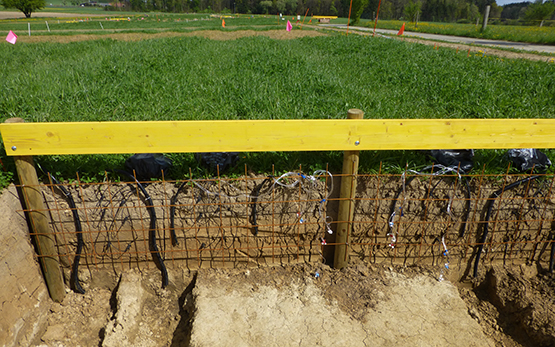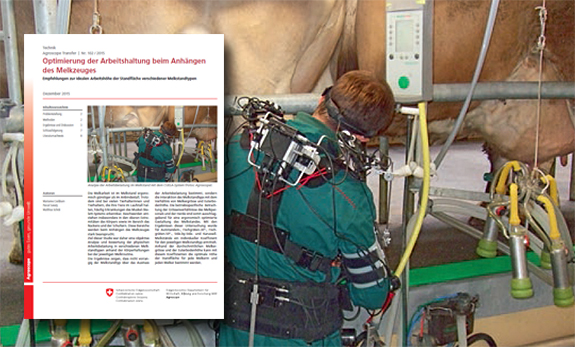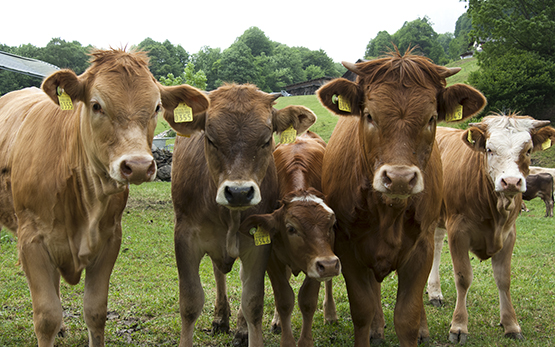Roesch A., Douziech M., Mann S., Lansche J., Gaillard G.
Consequences of the use or absence of life cycle assessment in novel environmental assessment methods and food ecolabels.
Cleaner Production Letters, 8, 2025, Artikel 100087.
Nemecek T., Roesch A., Bystricky M., Jeanneret P., Lansche J., Stüssi M., Gaillard G.
Flexible, efficient and consistent agricultural inventory modelling with SALCA.
In: 14th International Conference LCAFood. 9 September, Hrsg. IRTA, Barcelona (ES). 2024, 988-990.
Nemecek T., Roesch A., Bystricky M., Jeanneret P., Lansche J., Stüssi M., Gaillard G.
Flexible, efficient and consistent agricultural inventory modelling with SALCA.
In: 14th International Conference LCAFood. 10 September, Hrsg. IRTA, Barcelona (ES). 2024.
Douziech M., Ehlers M.-H., Baumeyer Brahier A., Bagnoud M., Gaillard G.
Nachhaltigkeitsbewertung der Algenproduktion als alternatives Futtermittel.
In: . 22. Oktober, Hrsg. Agroscope, Zürich. 2024.
Mejia B. M., Stüssi M., Mehner E., Gaillard G., Douziech M.
A practitioner-driven methodological framework to assess the sustainability of regional food products.
In: 14th International Conference LCAFood. 9 September, Hrsg. IRTA, Barcelona (ES). 2024, 1-14.
Bystricky M., Furrer C., Ritzel C., Nemecek T., Gaillard G.
Effects of water protection measures in agriculture on the environmental impacts of the Swiss food sector.
Journal of Cleaner Production, 466, 2024, 1-13.
Bystricky M., Mack G., Gaillard G., Herzog F., Irek J., Jeanneret P., Kaiser A., Klein N., Pedolin D., Ritzel C., Wang Y., El Benni N.
Evaluation agrarpolitischer Massnahmen bezüglich Biodiversitätswirkung: Versorgungssicherheitsbeiträge und Grenzschutz.
Agroscope Science, 187, 2024.
Douziech M., Bystricky M., Furrer C., Gaillard G., Lansche J., Roesch A., Nemecek T.
Recommended impact assessment method within Swiss Agricultural Life Cycle Assessment (SALCA): v2.01.
Agroscope Science, 183, 2024.
Nemecek T., Roesch A., Bystricky M., Jeanneret P., Lansche J., Stüssi M., Gaillard G.
Swiss Agricultural Life Cycle Assessment: A method to assess the emissions and environmental impacts of agricultural systems and products.
The International Journal of Life Cycle Assessment, 29, 2024, 433-455.
Furrer C., Iten L., Nemecek T., Gaillard G.
Development of an easy-to-implement pesticide-related food product score: Potential and limitations.
In: SETAC Dublin 33rd annual meeting. 2023, Hrsg. Society of Environmental Toxicology and Chemistry Europe (SETAC Europe), Dublin. 2023, 1-2.
Furrer C., Iten L., Nemecek T., Gaillard G.
Development of an easy-to-implement pesticide-related food product score: Potential and limitations.
In: SETAC Europe 33rd annual meeting. 2 May, Dublin. 2023, 1-15.
Roesch A., Douziech M., Mann S., Lansche J., Gaillard G.
Methoden zur Bewertung der Nachhaltigkeit von Nahrungsmitteln: Mögliche Fallstricke und Beispiele.
In: 13. Ökobilanz Plattform Land- und Ernährungswirtschaft. 20. Juni, Zürich. 2023, 1-11.
Roesch A., Douziech M., Mann S., Lansche J., Gaillard G.
Methoden zur Bewertung der Nachhaltigkeit von Nahrungsmitteln: Mögliche Fallstricke und Beispiele.
In: 13. Ökobilanz Plattform Land- und Ernährungswirtschaft. 20. Juni, Zürich. 2023, 1-11.
Furrer C., Iten L., Nemecek T., Gaillard G.
M-Check 2.0: "Umweltverträglicher Pflanzenschutz": Methode zur Abschätzung des Ökotoxizitätspotenzials pflanzlicher Nahrungsmittel im Kontext einer Sternenbewertung gemäss dem Konzept M-Check 2.0.
Agroscope Science, 144, 2023.
Gilgen A., Drobnik T., Mann S., Flury C. M., Mack G., Ritzel C., Roesch A., Gaillard G.
Can agricultural policy achieve environmental goals through an indicator-based direct payment system?
Q Open, 3, (3), 2023, 1-26.
Gilgen A., Drobnik T., Roesch A., Mack G., Ritzel C., Iten L., Flury C., Mann S., Gaillard G.
Indikatorbasierte Direktzahlungen im Agrarumweltbereich: Schlussbericht ans Bundesamt für Landwirtschaft.
Agroscope Science, 136, 2022.
Gaillard G., Bystricky M., Gilgen A., Nemecek T.
Ökologische und ökonomische Bewertung von Klimaschutzmassnahmen in der Landwirtschaft.
In: Klimaschutz mit Land- und Forstwirtschaft. 14.10., DAF. 2021, 1-27.
Bystricky M., Nemecek T., Gaillard G.
LCA of pesticide-free agriculture: A Swiss case of ex-ante evaluation of political decisions.
In: SETAC Europe 2021: Global challenges. An emergency for environmental sciences. Hrsg. SETAC Europe, Brüssel. 2021, 106.
Roesch A., Nyfeler-Brunner A., Gaillard G.
Sustainability assessment of farms using SALCAsustain methodology.
Sustainable Production and Consumption, 27, 2021, 1392-1405.
Nyfeler-Brunner Aurelia, Roesch A., Gaillard G.
Sustainability assessment test under real time condition (SustainFarm).
In: 12th International Conference on Life Cycle Assessment of Food (LCAFood2020). 13-16 October, Hrsg. Eberle, U., Smetana, S., Bos, U. (Eds.), DIL, Quakenbrück, Germany. 2020, 372-375.








